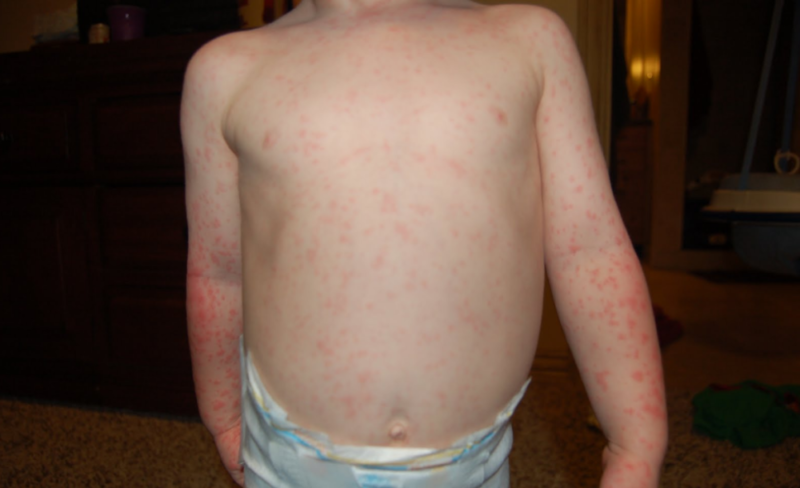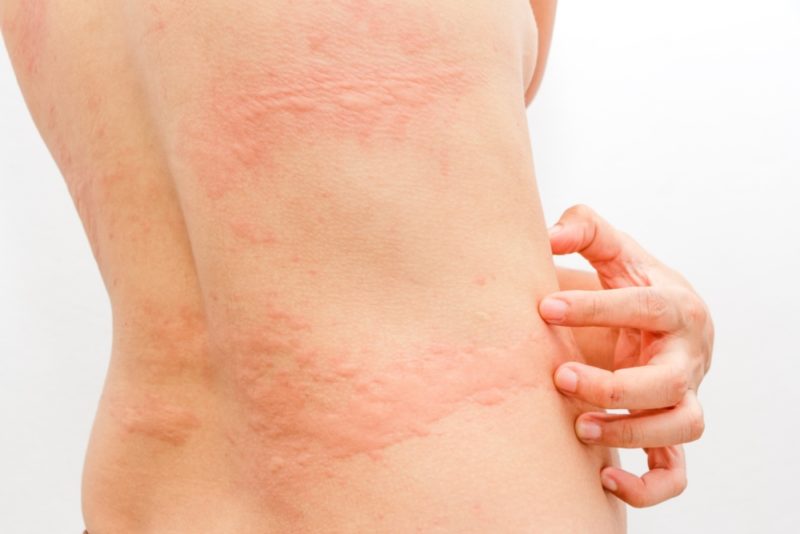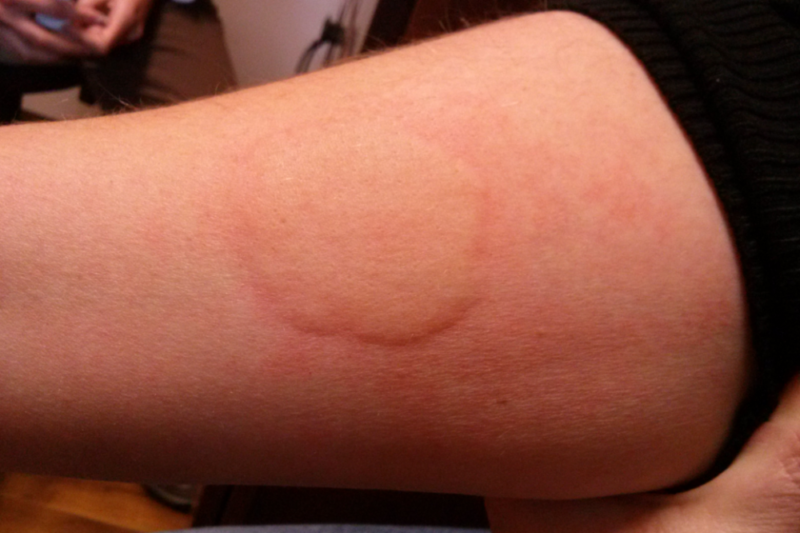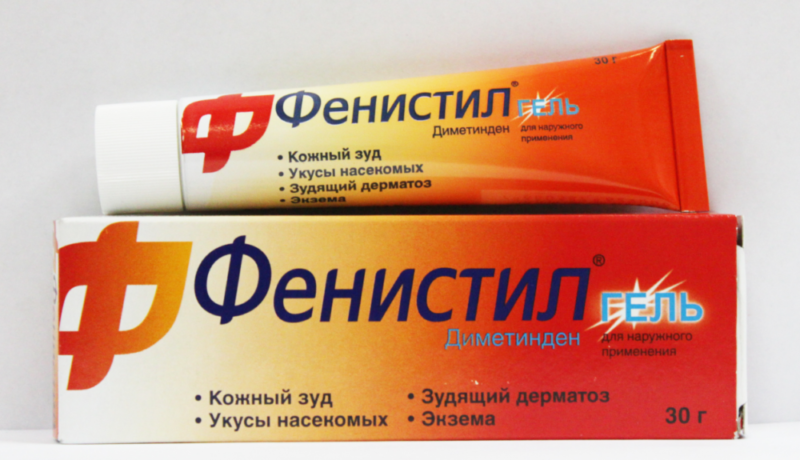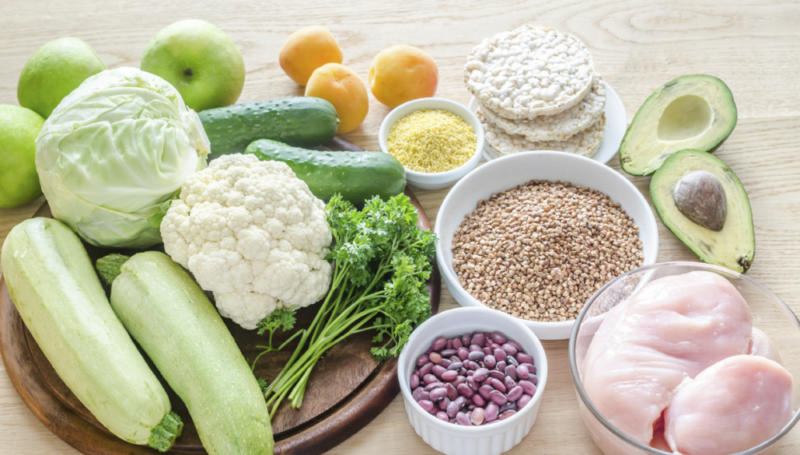Local redness, blisters are the main signs of a nettle rash. Chronic and acute cholinergic urticaria occurs in a child or adult with a predisposition to nettle fever. In a family medicine cabinet there should always be an antihistamine and a cream with corticosteroids.
Material Content:
Description of cholinergic urticaria
An increase in body temperature during exercise or bathing in hot water is enough for the appearance of symptoms of the disease. With cholinergic urticaria, severely itchy blisters appear on the skin. The epidermis looks like after touching the stinging hairs of a dioica nettle (lat. Urtica dioica). Such a symptom appeared at least once in a lifetime in 25% of adults.
On a note! Urticaria or urticaria is a type of allergic dermatitis.
The acute form of this skin disease appears in less than 6 weeks. Chronic urticaria develops and regresses over a period of more than 1.5 months. The acute form is diagnosed in 80% of patients under the age of 18 years, who came to dermatologists with nettle rash.
Cholinergic urticaria is also called thermal, sweat. It occurs with an increase in body temperature. Factors that act on the body from the outside provoke the disease. Localization of redness, allergic rash - face, neck, upper torso.
Causes of the disease
An increase in body temperature with cholinergic urticaria is accompanied by the release of neurotransmitters, inflammatory vehicles, from special cells. Acetylcholine is one of the substances in this group.An unusual reaction of the body most often appears with a hereditary predisposition of the body to allergies.
Hypersensitivity to acetylcholine has an autoimmune nature.
Provoke the development of cholinergic urticaria in adults:
- bath, sauna, hot shower or bath;
- intense physical activity;
- hot drinks, alcohol;
- playing sports;
- hot climate;
- spicy food;
- fever.
Cholinergic urticaria in children develops with fever during illness, outdoor games, water procedures. Manifestations may occur in a too warmly dressed child.
Characteristic signs and symptoms
Inflammatory mediators cause the expansion of capillaries, an increase in vascular permeability to blood plasma. The patient feels excruciating itching of the skin in the neck and chest. Less often, redness and burning appear on the face.
The main elements of the rash are small blisters, which often merge into large ones. Symptoms of cholinergic urticaria usually occur 15-60 minutes after an increase in body temperature by about 1 ° C.
The blisters most often have a rounded and oval shape, a diameter of 2-5 mm to several centimeters, a light pink color, raised above the skin. In mild cases, superficial edema is formed, less often inflammation extends to the deeper layers of the skin.
Other features of nettle rash:
- the skin at the top of the blisters is pale pink, hyperemic along the edge;
- there is no cavity with liquid contents inside the rash element;
- pain may be felt in the area of the rash;
- blister healing occurs without the formation of a crust, scar.
If the patient has acute cholinergic urticaria or an attack of a chronic disease, then a decrease in temperature after the appearance of blisters leads to the disappearance of the rash. During the day, the symptoms of an allergic disease can resume. With the continuation of the action of the provoking factor, mast cells again begin to release the inflammatory mediator.
A stress test is used to diagnose cholinergic urticaria. A warmly dressed patient engages in a bicycle ergometer before sweating, then another 20 minutes before increasing the pulse rate (170). The appearance of blisters is evidence of an allergic reaction of the body to fever.
A papular form of nettle rash may occur, in which, in addition to blisters, papules with serous contents appear. A complication of urticaria is Quincke's edema. In dangerous conditions, you need to seek help from doctors.
Traditional treatments
With a mild course of cholinergic urticaria, it is sufficient to avoid exposure to provoking factors. It is not always possible to foresee all situations in life in which the body temperature rises. If a nettle rash appears, then cooling and soothing lotions and gels are applied to the skin to relieve itching.
External means:
- Fenistil - antihistamine emulsion and gel with dimethindene. The product is suitable for children older than 1 month.
- Advantan - cream, emulsion and ointment with methylprednisolone for patients older than 4 months.
- Elokom - ointment and cream with mometasone, used from the age of 2 years.
- Rederm is an ointment with betamethasone and salicylic acid for the treatment of allergic dermatoses.
Methylprednisolone, mometasone, betamethasone - glucocorticosteroids (GCS). Local hormones cool and soothe the epidermis, reduce swelling, burning of the skin, quickly eliminate the focus of local inflammation.
Inside antihistamines, corticosteroids, sedatives are prescribed in severe cases. A complex of drugs is used for a large lesion, severe itching, irritability, and insomnia. The maximum effect is achieved with a combination of medication and diet.
Antihistamines for the treatment of cholinergic urticaria:
- Zyrtec, Cetrin, Parlazin, with cetirizine;
- Allergodil with azelastine;
- Claritin with loratadine;
- Erius with desloratadine;
- Kestin with ebastin.
Young children are advised to give drops of Fenistil and Zirtek. An antihistamine in liquid form for oral administration relieves the baby of intense itching, discomfort.
Folk remedies and recipes
To relieve itchy skin lotions with a solution of lemon juice or apple cider vinegar are used. An astringent and calming effect on the epidermis has a decoction of oak bark. They make baths with a solution of baking soda, infusions of anti-inflammatory and anti-allergic herbs: string, chamomile, sage, birch, mint, lavender.
The ointment from celandine juice soothes the skin. Fresh grass is washed, crushed. Squeeze the juice, insist 1-2 weeks in sunflower oil. The product is stored in the refrigerator. Ointment is applied to the affected areas 2 times a day.
Use inside instead of coffee or compote herbal tea. Brewed leaves of nettle, black currant, lemon balm, baskets of chamomile. Use 1-2 tsp. herbs in a cup of boiling water. Insist 10 minutes, drained from the residue. Take the infusion in a warm form.
Phyto-baths are useful for hives, but steam and hot water worsen the skin condition with the cholinergic variety of urticaria. You can take water procedures for no longer than 15 minutes. Water temperature should not be higher than 37 ° С. It is recommended not to rub the skin, but only to get it wet with a towel.
Diet and nutrition rules
The use of various flavors requires special attention. Spices, mustard, ketchup, horseradish can cause an increase in body temperature and an attack of cholinergic urticaria.
The patient’s diet includes products that do not cause allergic reactions, do not irritate the digestive tract. Safe meals do not contain allergens, histamine. Such a diet should be followed during the week. Heat treatment of products should be gentle. You can boil, steam, bake. Stew vegetables and meat with a little oil.
Allergenic properties of products are reduced when certain rules are followed. It is recommended to drain the first water when cooking meat and poultry, soak potatoes, carrots, beets, cereals, legumes in water before cooking.
Prevention of cholinergic urticaria
Starting factors for the disease are physical activity, games that increase sweating, hot meals and drinks, the effect of high temperatures on the body (for example, in the bathroom). The main subspecies of urticaria develop in response to various factors. The patient may develop hypersensitivity to two or more irritants.
It is necessary to avoid nervous overfatigue, stress, review the diet in favor of hypoallergenic products, exclude alcohol and smoking. You can take sedatives of herbal origin.
Daily walks in the open air, creating a favorable psychological climate in the family, and healthy sleep improve the condition of the patient with urticaria. It is necessary to avoid visiting the baths and saunas, revise the wardrobe, dress according to the weather. The best ventilation is provided by linen and clothes made from natural fabrics.


